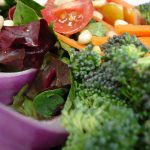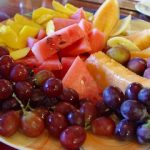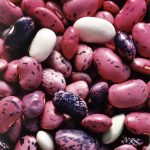Guest post by Jennifer Markowitz MS RD, Clinical Dietitian in the Nutrition Department at The Mount Sinai Hospital.
 Fad diets are rarely backed by substantiated evidence, yet with grandiose claims of rapid fat loss or profound energy enhancement they talk a big game. As trendy diet plans have cycled through their fifteen minutes of fame, there is one approach to healthful eating that has curiously stayed out of the limelight despite maintaining a legitimacy few fads have known.
Fad diets are rarely backed by substantiated evidence, yet with grandiose claims of rapid fat loss or profound energy enhancement they talk a big game. As trendy diet plans have cycled through their fifteen minutes of fame, there is one approach to healthful eating that has curiously stayed out of the limelight despite maintaining a legitimacy few fads have known.
The DASH diet, a no-frills regimen that was born out of a government-funded study seeking to reduce hypertension, has garnered the title of best overall eating plan by US News for the sixth year running. The plan, standing for Dietary Approaches to Stop Hypertension, is a common-sense approach to eating that offers serious results; it has been proven to reduce cholesterol, lower blood pressure, and improve insulin sensitivity. Additionally, several studies tout its efficacy for weight loss.
 What makes the DASH diet so appealing isn’t only that it can help reduce risk of heart disease and other conditions. The true appeal is that eating according to the DASH model is both logical and user-friendly. Though the plan does dictate a specific number of daily servings of particular food groups, it is designed to mesh with a variety of eating styles. The secret to its success is that it is rich in potassium, magnesium, calcium, and fiber, while checking intake of excess sugar, sodium, saturated fats, and refined carbohydrates.
What makes the DASH diet so appealing isn’t only that it can help reduce risk of heart disease and other conditions. The true appeal is that eating according to the DASH model is both logical and user-friendly. Though the plan does dictate a specific number of daily servings of particular food groups, it is designed to mesh with a variety of eating styles. The secret to its success is that it is rich in potassium, magnesium, calcium, and fiber, while checking intake of excess sugar, sodium, saturated fats, and refined carbohydrates.
 The DASH diet emphasizes whole grains, fruits, vegetables, and low-fat dairy. When you choose to include plenty of these instead of focusing on what you’re meant to exclude, you’ll be well on your way. Do away with cutting carbs and measuring portion sizes; take the flexible approach by following the guidelines below.
The DASH diet emphasizes whole grains, fruits, vegetables, and low-fat dairy. When you choose to include plenty of these instead of focusing on what you’re meant to exclude, you’ll be well on your way. Do away with cutting carbs and measuring portion sizes; take the flexible approach by following the guidelines below.
Breakfast
- Prepare rolled or steel cut oats with low-fat milk instead of water
- Top a high-fiber cereal with berries and low-fat milk
- Load scrambled eggs with veggies for a deconstructed omelet; pair with a slice of whole wheat toast
- Opt for low-fat milk in coffee instead of cream or whole milk
- Get trendy with whole wheat avocado toast, and a side of eggs and tomatoes
- Try a parfait made with low-fat yogurt, nuts, and fruit for lean protein and a dose of healthy fats
Lunch
- Load sandwiches with extra veggies – think tomatoes, spinach, sprouts, and sliced peppers; add a slice of low-fat cheese for a boost of protein and calcium
- Top salads with a rainbow of fruits and vegetables; add beans and nuts or seeds for an extra dose of fiber, protein, and healthy fats
- Cook a batch of whole grains (quinoa, farro, brown rice) to pack as an addition to salads for the week
- Pair a sushi roll with edamame or vegetable wrap
- Swap half a sandwich for a colorful salad
Dinner
- Add an extra vegetable serving to what you’re already eating
- Keep frozen veggies on hand for a quick addition to homemade soups
- Go meat-free: try eating veggie burgers, beans, or tofu once a week
- Roast or grill a big batch of your favorite veggies for easy leftovers
- Pair a lean protein with a mix of stir-fried vegetables for a colorful quick meal
- Downsize your typical serving of red meat; make up for it with a fiber-rich veggie
- Keep the serving dish of vegetables on the table for easy second helpings
Smart Snacks
- Avoid packaged, processed foods that are high in sugar and sodium
- Pack fruit for healthy snacking on the go
- Low-fat string cheese or small bags of nuts are pre-portioned easy proteins
- Nut butter packets are tasty on their own or paired with bananas, apples, or celery
